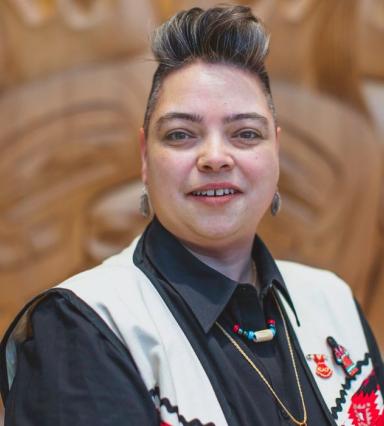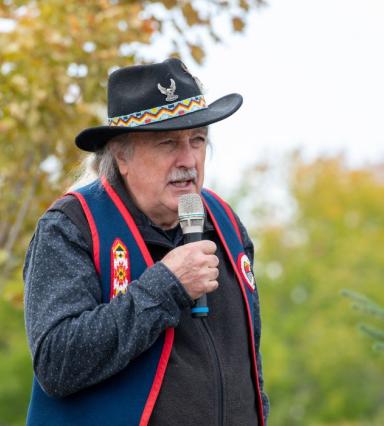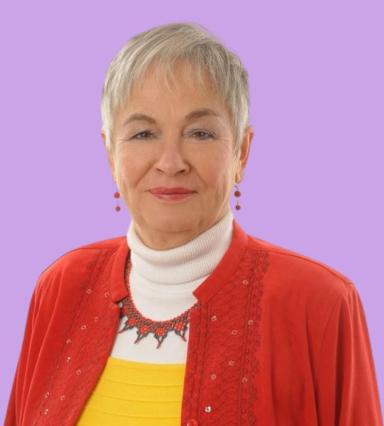

Transparency, inclusivity, accountability
FSC Canada was established in 1993 as part of the global Forest Stewardship Council initiative and has been a leader in recognizing Indigenous rights, including alignment with the principles of the United Nations Declaration on the Rights of Indigenous Peoples (UNDRIP).
The organization is committed to transparency, inclusivity, and accountability. Decisions are made by members, who represent four distinct chambers: Economic, Social, Environmental, and Indigenous. Each chamber is given equal weight in approving policies and standards, ensuring that the interests of all members are balanced.
The Indigenous Chamber provides strategic direction on how FSC Canada recognizes Indigenous values, including development of the National Forest Stewardship Standard of Canada and the FSC Guidelines for the Implementation of the Right to Free, Prior and Informed Consent (FPIC). The Chamber was also instrumental in the establishment of the Permanent Indigenous Peoples Committee and the FSC Indigenous Foundation at the FSC international level.

FSC and FPIC
FSC is the only forest certification system in Canada with Free, Prior and Informed requirements. To achieve and maintain FSC certification, forest owners and managers must uphold FPIC requirements.
FSC Canada understands the true meaning of FPIC. “Free” means without coercion, manipulation, or intimidation. “Prior” means well in advance of any project or activity taking place. “Informed” involves providing all relevant information about the potential activity in a way that respects the community’s language and culture. This process provides Indigenous Peoples the right to grant, withhold, or withdraw consent for management activities affecting traditional lands.
We recognize that our FPIC requirements alone cannot fully address the complex challenges faced by Indigenous communities. However, they serve as a critical foundation for ensuring meaningful participation in forest management planning and creating opportunities for shared benefits.
Benefits of FSC for Indigenous Peoples Impacted by Forest Management Activities

Benefits of FSC for Indigenous Peoples Impacted by Forest Management Activities
-
Respect for Indigenous Peoples' Rights and Governance
FSC upholds Indigenous Peoples’ rights through the Free, Prior, and Informed Consent (FPIC) requirements found in Principle 3 of the National Forest Stewardship Standard.
-
Honouring Traditional Ecological Knowledge
FSC recognizes and respects the cultural values and traditional ecological knowledge of Indigenous Peoples, integrating wisdom for enhanced biodiversity (found in criterion 3.6 of the standard).
-
Protection of Sites with High Cultural and Economic Importance
FSC Canada requires forests or lands with “high conservation values” to be identified, protected and accessible for traditional practices and ceremonies. These can include critical habitats for rare, threatened and endangered species, culturally significant sites, or areas of high social or economic importance (found in criterion 3.5 and 9.1-9.4 of the standard).
-
Fostering Collaboration and Networking Building Opportunities
The FSC certification process helps to foster collaboration and network building opportunities for Indigenous communities with government, ENGOs, unions, and businesses which can provide support, resources, and information-sharing opportunities.
-
Enabling Meaningful Participation
The FSC certification process respects Indigenous Peoples’ rights by requiring culturally appropriate engagement and collaboration in forest management decisions impacting traditional territories. If a disagreement occurs, parties need to follow a defined dispute resolution process in efforts to resolve the dispute (found in criterion 1.6, 3.1, and 4.6 of the standard).
-
Transparency about Impacts of Forest Management Activities
FSC requires certificate holders to publish the results of progress towards achieving forest management objectives, impacts of forest management activities, and the condition of the forest management unit (found in criterion 8.2 of the standard).
-
Economic Opportunities
FSC can create economic opportunities by opening markets that prioritize sustainable and responsible sourcing of wood products including from Indigenous managed forests. FSC certification also supports local employment opportunities for forest dependent communities (found in criterion 4.3 of the standard).



